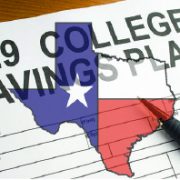


By Lauren Rich
Wealth Advisor
Linscomb & Williams
Author Jarod Kintz is reported to have remarked on the high cost of college: “I wouldn’t advise making a four-year commitment to eventually land an $8.00/hour job. Skip college. Read Wikipedia for free instead.”
Most of the clients we’ve worked with in our 48-years would disagree with his conclusion but probably understand his point. Most families eventually gain some personal experience with the price tag of higher education costs. If you are fortunate enough to be past this point, you may now be thinking about college funding for your grandchildren.
The bad news? Quality college education is not getting cheaper. In fact, the cost of higher education is escalating ahead of inflation.
The good news? Advance preparation for funding a child’s or grandchild’s education expenses can make a major difference.
We have two basic tools in Texas that anticipate these financial goals. Most families really want to know, “What is right for our situation?”
- 529 College Savings Plans (529 Plans) are much like a 401(k) plan without the upfront tax deferral. The money accumulates tax-deferred for future education costs. You contribute money in a lump-sum or periodically. It is invested in various investment vehicles like mutual funds. Hopefully, it grows in value. When the student named as the beneficiary reaches college, money is withdrawn to pay for qualified education expenses (books, tuition, room & board, and fees). As long as funds are used for qualified expenses, no income tax is due on the gain in value.
- Texas Tuition Promise Fund® (TTPF) is a prepaid tuition arrangement. You pay money to a fund managed by the State of Texas today and receive what amounts to a “coupon”. Later, that coupon can be “redeemed” at various state-supported universities to pay for tuition and required fees, but not text books or room & board. The advantage of purchasing the “coupon” today is to protect yourself or your student from the rising cost of tuition and fees in future years. There are three variations of “coupons” that you can purchase – the least expensive providing guaranteed tuition and fees for two-year community colleges, and the most expensive designed to cover state universities which tend to cost the most.
What is best for a family depends on their situation.
- The 529 Plans are the more flexible of the two arrangements. They can cover the costs of virtually any institution of higher education – in Texas, out of state, public, or private. The TTPF, while offering an option for the cost of tuition and fees at non-Texas universities and private schools, is significantly more restricted.
- The TTPF provides a guaranteed outcome for your money. If your child or grandchild attends a state university in Texas, you have an assured contribution toward the cost of tuition and fees, regardless of their amount in the future. A 529 Plan may give you a better result from its investment returns, but that result is not guaranteed.
- A 529 Plan, by itself, can form a single, total solution for future education costs. The TTPF, because it is limited to only tuition and fees, cannot truly be a total solution by itself.
- Both arrangements benefit under the tax code in much the same way if the money is used as intended. In both cases, if the accumulated funds are not used as intended, there will be some income reported on your tax return and some penalty tax will apply. However, neither approach enjoys any particular tax advantage over the other, given the present rules.
My colleague, Phillip Hamman, CFA, CFP® heads our Wealth Planning Committee which is a group of multi-disciplined professionals including lawyers and CPAs that strive to define our “best practice” disciplines for advice in this area. Phillip commented after our last review, “In practice, we find that most families favor the 529 College Savings Plans as a means of funding future educational expenses. Often, the flexibility with regard to where the money may be used and the fact that it can cover the full range of educational costs is the deciding factor. However, every situation is different and a good plan calls for thoughtful consideration to each family’s situation and needs. It’s highly personal and one size does not fit all.”


























